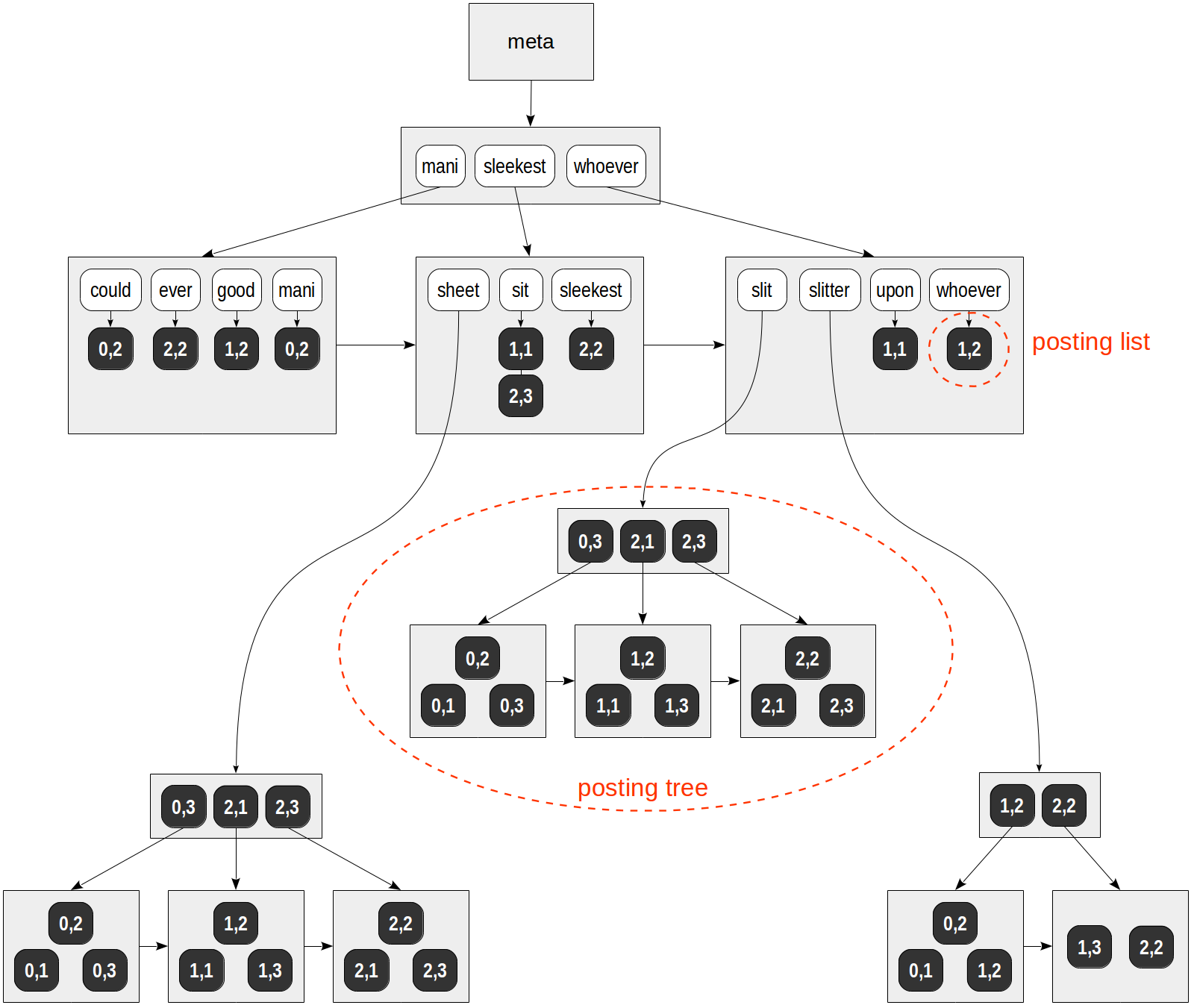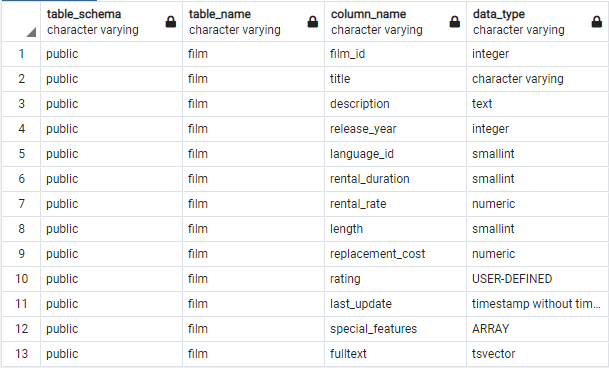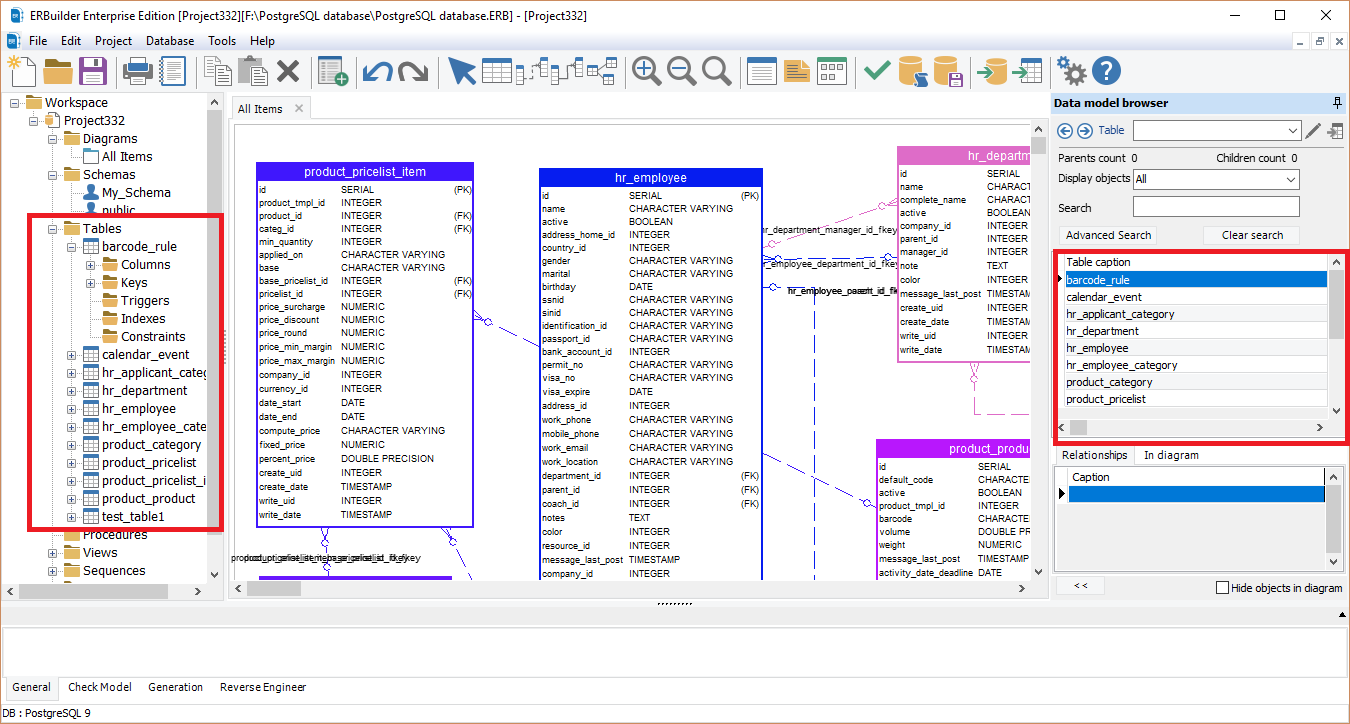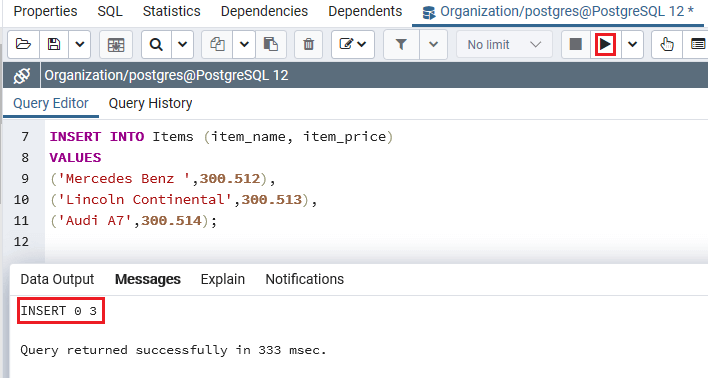
- #Postgresql insert into table all columns how to
- #Postgresql insert into table all columns serial
- #Postgresql insert into table all columns code
In case you omit an optional column, PostgreSQL will use the column default value for insert. If you omit required columns in the INSERT statement, PostgreSQL will issue an error. To insert character data, you enclose it in single quotes (‘) for example 'PostgreSQL Tutorial'.
#Postgresql insert into table all columns code
The statement returns the following output: INSERT 0 1 Code language: Shell Session ( shell ) VALUES( '', 'PostgreSQL Tutorial') Code language: SQL (Structured Query Language) ( sql ) The following statement inserts a new row into the links table: INSERT INTO links ( url, name) 1) PostgreSQL INSERT – Inserting a single row into a table In this tutorial, you just need to execute it to create a new table.
#Postgresql insert into table all columns how to
Note that you will learn how to create a new table in the subsequent tutorial. ) Code language: SQL (Structured Query Language) ( sql ) The following statement creates a new table called linksfor the demonstration: DROP TABLE IF EXISTS links RETURNING output_expression AS output_name Code language: SQL (Structured Query Language) ( sql ) PostgreSQL INSERT statement examples For example: INSERT INTO table_name(column1, column2, …) To rename the returned value, you use the AS keyword followed by the name of the output. RETURNING id Code language: SQL (Structured Query Language) ( sql )

If you want to return just some information of the inserted row, you can specify one or more columns after the RETURNING clause.įor example, the following statement returns the id of the inserted row: INSERT INTO table_name(column1, column2, …) RETURNING * Code language: SQL (Structured Query Language) ( sql ) If you want to return the entire inserted row, you use an asterisk ( *) after the RETURNING keyword: INSERT INTO table_name(column1, column2, …) The INSERT statement also has an optional RETURNING clause that returns the information of the inserted row. The count is the number of rows that the INSERT statement inserted successfully. Typically, the INSERT statement returns OID with value 0. PostgreSQL used the OID internally as a primary key for its system tables. The INSERT statement returns a command tag with the following form: INSERT oid count

The columns and values in the column and value lists must be in the same order. Second, supply a list of comma-separated values in a parentheses (value1, value2.First, specify the name of the table ( table_name) that you want to insert data after the INSERT INTO keywords and a list of comma-separated columns ( colum1, column2.

VALUES (value1, value2, …) Code language: SQL (Structured Query Language) ( sql ) The following illustrates the most basic syntax of the INSERT statement: INSERT INTO table_name(column1, column2, …) The PostgreSQL INSERT statement allows you to insert a new row into a table. Introduction to PostgreSQL INSERT statement

For example, the following tries to insert a date value in the gender column and so it will return an error.Summary: in this tutorial, you will learn how to use the PostgreSQL INSERT statement to insert a new row into a table. You must specify values for the column in the order of columns defined in the table, otherwise, it will result in wrong data insertion or an error. The above statement inserted a single row, so it will return INSERT 0 1. The count is the number of rows inserted to the table. In the INSERT oid count, the oid is an object identifier which will always be 0 for the INSERT statement. No need to specify a value for that column in the INSERT statement.Įxecuting the above query in pgAdmin will display the following result:Įxecuting the INSERT INTO statement will return INSERT oid count as a result along with the query execution status like "Query returned successfully in 52 msec." in pgAdmin.
#Postgresql insert into table all columns serial
If the table has a SERIAL column, Postgres will automatically generate a sequence number for the serial column. To insert a date value to the column with DATE datatype, need to specify the date in ‘YYYY-MM-DD' format. To insert character or string data, it needs to be enclosed in single quotes 'value'. If you do not specify the optional column (NULL column) then the INSERT statement will add NULL or DEFAULT value (if specified) in the table. If you do not specify the required column (NOT NULL column) in the INSERT statement, Postgres will raise an error. Column values are specified in the VALUES clause. The above INSERT statement will insert data into all the columns of the employee table.


 0 kommentar(er)
0 kommentar(er)
